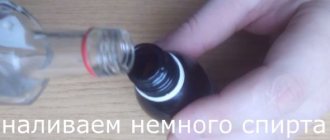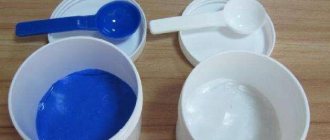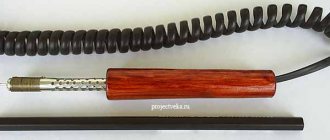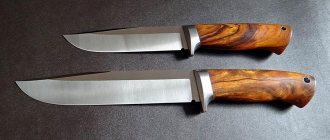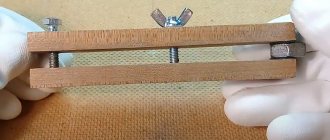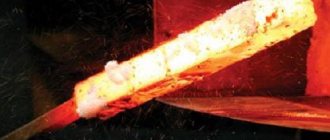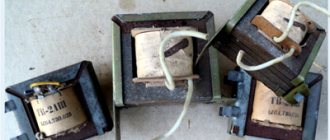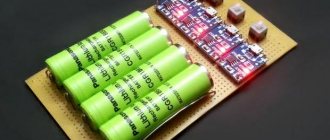How to make liquid rosin for soldering?
Flux is a substance, both organic and inorganic, that ensures the removal of oxides from soldered conductors, reduces the force of surface tension, and also improves the uniformity of spreading of molten solder. In addition to its main purpose, flux can protect contacts from environmental influences, but it should be noted that not all types of fluxes have this property.
Depending on the need, flux can be in the form of liquid, powder or paste.
Solder pastes are also produced that contain solder particles along with flux, and all modern solders are a tube of solder inside which there is a flux filler.
According to the temperature regime and activity interval, fluxes can be divided into low-temperature (up to 450 degrees) and high-temperature (more than 450 degrees). In addition, the flux can be aqueous or anhydrous.
Based on their chemical properties, all fluxes can be divided into acidic (active) and acid-free. In addition, there are also activated and with anti-corrosion protection.
Active fluxes
mainly consist of hydrochloric acid and chloride or fluoride metals. The pharmaceutical drug acetylsalicylic acid (aspirin) has long been used as an active flux. These fluxes very intensively dissolve the oxidized layer on the surface of the metal, and the soldering immediately becomes high-quality and durable, but the flux residue after soldering causes intense corrosion of the joint and the base metal in the future. Therefore, it is recommended to wash off all flux residues that remain at the soldering site.
When soldering radio-electronic elements, the use of active fluxes is not permissible, since over time their residues still corrode the place where thin radio elements are soldered.
Acid-free fluxes
, mainly these are rosin and fluxes prepared on its basis with the addition of alcohol, turpentine or glycerin. During the soldering process, rosin cleans the surface of oxides and also protects it from oxidation. At a temperature of 150 degrees, rosin dissolves the oxides of lead, tin and copper, cleaning their surface during the soldering process and the soldered joint becomes shiny and beautiful. But most importantly, unlike active fluxes, rosin fluxes do not cause corrosion and corrosion of metal. Copper, bronze and brass are soldered using rosin fluxes.
Activated fluxes
, mainly, in addition, they consist of rosin to which a small amount of hydrochloric acid or phosphate aniline, salicylic acid or diethylamine hydrochloride is added.
These fluxes are used for soldering the bulk of metals and alloys (iron, steel, high-quality stainless steel, copper, bronze, zinc, nichrome, nickel, silver), even oxidized elements from copper alloys in the absence of preparatory cleaning.
Activated fluxes are considered to be LTI fluxes, which contain ethyl alcohol (66 - 73%), rosin (20 - 25%), aniline hydrochloride (3 - 7%), triethanolamine (1 - 2%). LTI flux gives excellent results when using tin solders POS-5 and POS-10, providing increased strength of the soldered joint.
Anti-corrosion fluxes
used for soldering copper and copper alloys, constantan, silver, platinum and its alloys. They contain phosphoric acid with the addition of various organic compounds and solvents. Some anti-corrosion fluxes contain organic acids. Residues of these fluxes do not cause corrosion.
VTS flux, for example, consists of 63% of those. Vaseline, 6.3% triethanolamine, 6.3% salicylic acid and ethyl alcohol. Remains of flux are removed by wiping the part with alcohol or acetone.
Protective fluxes protect the previously cleaned metal surface from oxidation and do not have a chemical effect on the alloy. This group includes inactive materials: wax, petroleum jelly, olive oil, sweet powder, etc.
For brazing of carbon steels and cast iron
They use borax (sodium tetraborate), which appears as a white crystalline powder. Borax melts at a temperature of - 741° C.
For soldering brass parts
With silver solders, a mixture of 50% sodium chloride (table salt) and 50% calcium chloride is used as a flux. The melting point of the mixture is - 605° C.
For soldering aluminum
You can use fluxes that usually contain 30-50% potassium chloride.
For soldering stainless steel
, hard and heat-resistant alloys, copper-zinc and copper-nickel solders use a mixture consisting of 50% borax and 50% boric acid, with the addition of zinc chloride.
Active fluxes are washed off with a hairbrush or an ordinary toothbrush, using warm water or alcohol.
For soldering copper conductors, and these are often the types of conductors used in electrical and electronics, “liquid rosin” will work as a reliable means in the form of flux. For those who don’t know, pine resin is a pure environmental product.
How to prepare liquid rosin yourself?
1. We crush the rosin crystal into dust using crushed powder or wrapping it in a cloth and tapping it with a hammer. On a large scale, some craftsmen manage to use the Soviet manual meat grinder. The means are not important, the main thing is to achieve uniform fine dust from rosin crystals.
2. All dust must be filled with alcohol with a ratio of 1:1.5 (rosin: alcohol). It is convenient to do this using the same alcohol bottle. At the pharmacy you can buy alcohol with salicylic acid, such a solution itself can serve as a flux, and although the percentage of salicylic acid is very small, such “alcohol” is the best option for enhancing the desired properties of the flux. Next, pour rosin into half a bottle of alcohol until the desired ratio of components appears and make sure that about 1/5 of the bottle remains free!
3. Close our bottle (or other container) and place it in a container with warm water (60-80C). When the solution heats up, we begin to vigorously shake the solution so that it dissolves into a homogeneous mass. It will work much better and faster in hot water.
Then the resulting flux is poured into syringes for ease of use, or into bottles with a brush, like nail polish.
Obtaining rosin
If necessary, you can obtain rosin yourself. Spruce or pine resin is suitable as a raw material. Take an old ceramic cup and wrap the inside of it with aluminum foil. Separately, melt the resin in a metal canned jar and bring it to a boil. Remove debris that floats to the surface with a metal spoon. Once the boil has finished, quickly pour the liquid into a cup covered with foil. Wait for the rosin to cool, shake it out of the cup and peel off the foil. This process is flammable; this work must be carried out outdoors. During the dry distillation of oleoresin, turpentine is released, the vapors of which are toxic and should not be inhaled. For the same reason, resin cannot be used for soldering.
How to choose the right flux
Even with knowledge of the varieties and technical characteristics, not every person understands how to choose a flux. For safe soldering, neutral fluxes should be chosen. They are suitable for working with a variety of parts, but when soldering large components, the work will be slow.
To speed up the process, you can use medium-active fluxes. Such compositions are suitable for working with various metals. For working with large parts, silver solders are ideal.
The best substitutes
It is not always possible to find solder at home to solder broken contacts or wires. In such situations, repairs can be carried out without purchased compounds. You can replace flux with several substances:
- amber;
- fat;
- "Aspirin";
- resin.
Before starting work, Aspirin must be dissolved in a small amount of liquid.
Resin on wood
How to make alcohol rosin at home
As mentioned above, the basis of alcohol rosin is flux and alcohol. It is alcohol that makes it possible to make rosin liquid. As a result, alcohol-rosin flux is easily applied to the soldering area, filling even hard-to-reach places.
To make alcohol rosin with your own hands we will need the following components:
- Pure pine rosin;
- 90% alcohol. It must also be clean;
- Container for preparing rosin-based flux.
The materials and tools you will need are a hammer and a piece of thick fabric.
First of all, you need to grind the rosin. To do this, take a small piece of rosin and wrap it in thick fabric. Next, using a hammer, thoroughly grind the rosin into powder. If this is not done first, the rosin will take too long to dissolve in alcohol.
Next, the powdered rosin should be poured into a container and filled with alcohol. The approximate proportions of the components are as follows: 2 parts alcohol to 3 parts crushed rosin. Accordingly, if alcohol rosin turns out to be too liquid and you need to increase its viscosity, you should simply add some more rosin powder.
You can solder with alcohol-rosin flux, which is made according to this recipe, immediately after preparation. However, if the rosin has not been well ground, then it will take some time to dissolve in alcohol. As a rule, for rosin to completely dissolve in C2H5OH, you need to wait at least 2 days.
How to use
The main difficulty when using alcohol-rosin flux lies in its application. Therefore, usually the liquid is placed in a bottle that has a brush - nail polish bottles are best suited for this, since they have a built-in brush.
Sometimes alcohol-rosin flux is placed in eye drop containers so that it can be squeezed out drop by drop onto the soldering area. This also helps to dose the flux, but for most craftsmen a brush is still more convenient.
After applying the SCF, soldering can begin. Low-melting solders are used (up to 330°C).
There is no need to clean anything after, but if the flux got somewhere else during the application process, it can be removed with acetone.
How can you replace rosin when soldering?
This question is faced by people who have an urgent need to find an analogue from improvised means that have characteristics similar to rosin. There are many replacement options that experts recommend.
It can be used as tree resin, which is the best analogue of rosin, or even aspirin. It is recommended that the concentration of the medication be as high as possible - this is the only way to get the desired result when soldering. It can be dissolved in water and alcohol.
It is also possible to use rosin, which is used to lubricate musical instruments. We must not forget about animal fats, which help fight oxidative processes. This is probably the most affordable option at home.
Amber will also be an excellent analogue, since it has the most similar characteristics to ordinary rosin. However, its use is not always appropriate, since it is much more expensive than traditional material.
Composition of SKF flux
The first ingredient included in SCF is rosin. It is obtained after evaporating all volatile elements (mostly turpentine) from pine resin. The volume of the rosin part after this procedure is ¾ of the original mass of the resin.
Rosin can be used without alcohol, but then the entire working surface will become covered with dirt due to heating, and this makes it difficult to see parts that require soldering.
Therefore, rosin required a solvent, and at first ethyl alcohol (and sometimes even wine alcohol) was used as it. Today, the composition of the rosin solution includes ethanol or isopropyl alcohol, since it is closest to ethyl alcohol in properties. But such alcohol is more difficult to obtain, so it is not used so often.
Typically, SKF flux consists of crushed rosin and ethyl alcohol
Physico-chemical properties and composition
Before looking at how to melt rosin, it's worth considering what goes into it. The composition of the material is quite simple, since a person will need only two main components for preparation. most often this is rosin itself and alcohol, which is used as an organic solvent. With proper preparation and adherence to the technological regime, the final product looks like a homogeneous substance.
Using alcohol for liquid rosin
Water can be used together with alcohol, but it is used as an additional material, since it cannot dissolve the flux on its own. Factory brands also use additional corrosion inhibitors, additives, propanol and other elements.
The density of the liquid depends on the amount of rosin itself in the composition. The properties affecting soldering almost completely replicate those possessed by solid tallow rosin. But in the dissolved version they do not appear so strongly. Due to increased spreadability, the liquid gets into all the small irregularities that exist in the metal and this gives a much higher level of bonding than in initially solid flux brands. The main chemical property here is the neutrality of the environment, therefore, the composition is suitable for use with almost any part.
Purpose of rosin
Before describing the purpose of rosin, it is necessary to explain the difference between soldering and welding:
- During the welding process, the edges of the parts being joined are melted, the liquid phases mix and, when solidified, form a permanent connection.
- When soldering, the parts to be joined remain in a solid state, and only the metal used for the connection—the solder—melts. The molten solder spreads over the edges being joined and, when solidified, forms a permanent connection.
To guarantee quality, the edges of the parts to be fastened must be well wetted with solder. This is achieved by cleaning them from oxides and contaminants using fluxes - in this case, rosin.
Alcohol solution of rosin
The main function of rosin during soldering is to protect metal surfaces from oxidation. A solution of rosin in ethyl alcohol spreads better over a metal surface than molten rosin, making soldering more economical and the junction itself cleaner. Rosin in the form of a solution is applied to the cleaned metal surfaces before the soldering area is heated, which in turn further prevents the oxidation of these surfaces. A solution of rosin in ethyl alcohol is less toxic than a solution in acetone, which is why it is most widely used in technology.
Fluxes made from hydrochloric and phosphoric acid
You can also make two active fluxes for soldering, using hydrochloric and phosphoric acid for these purposes. The first flux recipe is prepared using hydrochloric acid and zinc granules, which dissolve in it. For one liter of hydrochloric acid you will need about 0.5 kg of zinc granules.
Even steel products can be soldered with a flux based on hydrochloric acid and zinc. Also, ammonia is often added to the composition of this flux, the same percentage as zinc granules. In this case, the flux can be used for soldering various metals.
A good flux for soldering stainless steel and nichrome can be made from phosphoric acid. You need to apply liquid fluxes with a thin brush, and solder using them only in a well-ventilated room. As for storage, acid-based fluxes are stored in closed glass containers with a narrow neck.
Motor oil for aluminum soldering
Soldering aluminum and aluminum-based alloys can be difficult. On an aluminum surface, upon contact with air, a persistent and refractory oxide film is formed. It creates a serious obstacle to tinning.
It is generally accepted that soldering aluminum requires a strong flux. But you can do without a special tool if you have at hand:
- solder POS-61;
- engine oil;
- soldering iron with a power of 100 W or more.
Need to:
- Clean the soldering area with a knife or sandpaper.
- Apply a little oil.
- Tin the aluminum.
Instructions for making flux
So, how to make soldering flux with your own hands? It all depends on the destination. If you need to solder thin wires, you can use rods with a diameter of 1 mm. We will make them ourselves.
We will need a small bottle or any other vessel with a flat bottom. We make a hole in the bottom with the diameter we need (in this case 1-2 mm). We take lead or tin and melt it using a gas burner. Pour it into our bottle. Molten metal will begin to flow out of the hole; you need to prepare the surface in advance. You can use a sheet of tin, for example. The resulting “rods” must harden, then they need to be cut. Experienced craftsmen use special molds to make rods. Also look at the review of bga soldering flux. There are also liquid fluxes, fluxes in the form of a gel or paste. They are now very popular and are available from any manufacturer. This is not surprising, because such fluxes do not cause oxidation, prevent the formation of corrosion, do not conduct current, and the soldering area does not need to be cleaned after work. This flux can also be made at home.
We will need rosin crystals, which need to be crushed into powder. Wrap the crystals in a thick cloth and tap them with a hammer (preferably a wood hammer or a meat mallet). Mix the powder and alcohol in a one to one ratio. Alcohol can be purchased at a pharmacy. It is advisable to mix in a glass container, such as a small jar. Thoroughly mix the alcohol with the powder and place the jar in hot water. Mix everything thoroughly again until it has a homogeneous consistency. Ready! The resulting flux can be used with a medical syringe or poured into an empty nail polish bottle.
Soldering may release substances that are hazardous to your health. Use protective gloves, a mask and goggles in your work. Do not purchase fluxes from little-known manufacturers, do not chase the lowest price. If possible, make your own flux. Follow safety precautions. This way you will reduce the likelihood of poisoning from flux vapors.
Varieties
Before you make flux for soldering at home, you should understand what types they are. They can be divided into active and inactive, depending on the amount of acid in their composition.
Active fluxes during the soldering process partially change the structure of the top layer of the surface of the parts. Inactive fluxes simply remove the oxide film present on the surface from the surface, and at the same time block the path for oxygen access.
If active fluxes are used, then it is necessary to remove what is left of them after the soldering process is completed. Inactive fluxes are organic and do not require removal. The final result of soldering depends on the correct choice of flux.
What you need for cooking
Before you start working on creating liquid rosin for soldering, you need to prepare all the ingredients and tools. For melting you will need rosin, water to dilute the thick mixture and alcohol. The tools you will need are:
- a gas stove or a special burner; solid pieces and liquid will be heated on them until they dissolve;
- a spoon to stir and dose the substance;
- a cup or mortar where rosin is crushed until fine;
- wooden masher;
- a jar for storing the resulting crushed flux.
